There are staves and badges dating from 1583, silver seals of the 13th and 14th centuries, four silver mace of 1680 presented by Lord Chandos, Chief Steward. These are Royal Mace, being permitted by Royal Warrant of King James l in 1619. In times past notable personages would have a bodyguard of four or so retainers or men at arms, each armed with a mace. The mace was a close contact weapon and effective against all but plate armour. From Tudor times the mace became the symbol of authority of the state and gradually maces became more ornamental in style and adapted for ceremonial use. Maces were later used for carrying summonses and important messages, and the Mayor’s Mace Bearers used them as symbols of their authority. Queen Elizabeth l, in her Charter to the City, permitted the Mayor to be preceded by Royal Maces. The present maces bear the cypher of King Charles ll. The maces are borne by the four liveried Mace Bearers in civic processions, preceding the Mayor and other civic dignitaries.

The silver heads of the Staves date from 1650. The staves are borne in civic processions by two liveried Stave Bearers.

The State Sword of 1677 is 52 inches (132 cm) long with a cross guard of 12 inches (30.5cm) and a blade of 37 inches (94 cm). It was presented to the City by Mr. P. Foley. It has symbols of law and justice on the pommel and the scabbard is decorated with Tudor Roses. The sword is born before the Mayor on all civic occasions by the Sword Bearer and represents the authority of the State. The sword is placed above the Mayor’s Chair during City Council meetings as a symbol of justice. The sword is purely ceremonial and, as far as is known, has no military associations, unlike the Mourning Sword.
The King’s Steel or Mourning Sword is believed to have been presented by Henry Vlll around 1528 and is only carried in the event of the death of the reigning Monarch or a Mayor during his year of office. The sword has connections with the Battle of Mortimers Cross in 1461. The victorious Yorkists chased and captured many of the defeated Lancastrians including Owen Tudor. He was unfortunate enough to be beheaded in the City where High Town stands today. It is believed that Henry Vlll, one of his descendants, presented the sword upon a visit to the City
The badge of office is a tradition dating back to the age of chivalry when literacy was at a low level, and officers of state and Local Government were more readily identifiable by their ‘Badges of Office and Rank’. Today the badge is symbolic, and is supported by a chain of office, another myth which has been handed down through time to the present day.The Mayor’s chain and badge was presented in 1876 and among its 24 medallions it has representations of Queen Elizabeth l, the Arms of the See of Hereford, the Arms of the Dean & Chapter, an apple, a hop, mistletoe, pear blossom, wheat, acorn, a bull’s head, Wye salmon and the Old House.
Items of particular interest and value include two silver candlesticks dated in London in 1666 and considered unique examples of silverwork. The Tomlin’s Cup of 1675 weighs 77 oz. (2.18 kg) and holds almost a gallon. The lid dates from 1882. The Cam Cup is again of silver and weighs 55 oz. (1.56kg). It has two handles and holds three quarts (3.4lt). Also donated, in the Diamond Jubilee year of Queen Victoria (1897), by the Mayor, Alderman Llanwarne, are a fine rosewater dish and ewer, dating from 1913 and 1811 respectively. There are several attractive pieces of silver presented by army regiments at different times, notably the Herefordshire Militia, disbanded in 1908. There is an 8 inch (20.3cm) high figure of a parachutist in silver, presented by the 22nd S.A.S. and a silver rose bowl presented by the R.A.O.C. and the R.A.O.C. Association in 1968.
Items not of silver but nevertheless of very great interest include two pewter tankards dating from 1667 and 1669. Also there is the fur hat of Maintenance, granted by Royal Warrant of Queen Elizabeth l and one of only ten in existence. The present Hat is made of American ermine.
This is a symbol of Royal Patronage granted to Mayors of ten principal ‘Cities’ of England by Queen Elizabeth l as a reward in support of the Sovereign. The Cap of Maintenance is worn by the Sword Bearer and placed before the Mayor when opening Council meetings.
The City holds four sets of (scarlet, trimmed with murrey velvet) Mayoral Robes, the earliest dating back to 1892. The robes are always worn with the Badge of Office and Chain. For less formal occasions the Badge of Office is worn on a blue ribbon, reducing the weight of the office considerably.
The badge is the actual symbol of office and was given to the City in 1876. The chain which supports it is one of the most splendid you will see anywhere; it is of solid gold and it contains 24 medallions showing aspects of the City and the County, such as apples, hops, the Hereford Bull, Wye salmon, and the military insignia from our local regiments, the most recent representing the 22nd Special Air Service Regiment.


